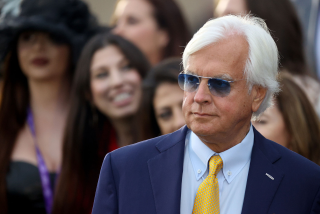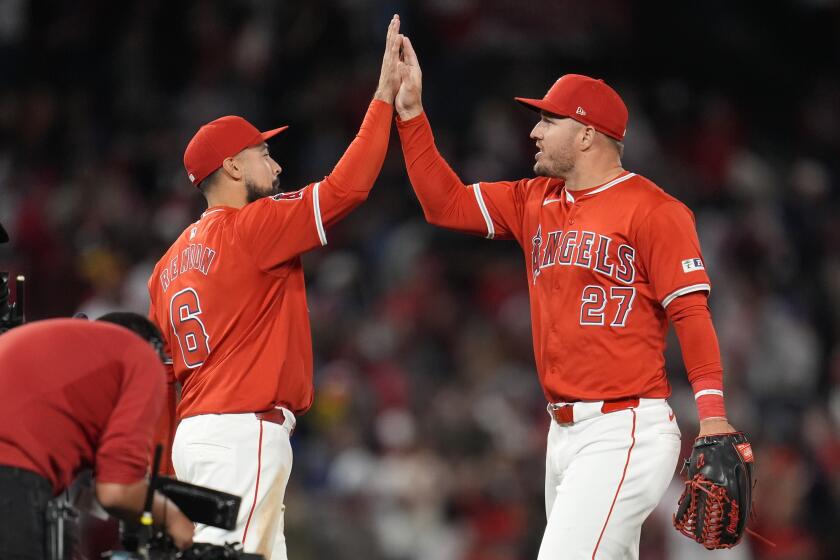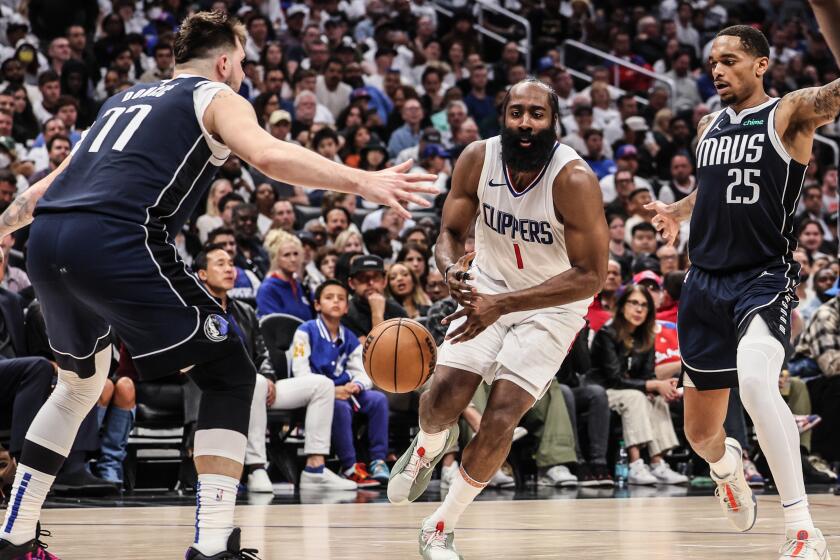Danny Thompson Helps Realize His Dad’s Dream
Danny Thompson still remembers the day when his dad first pitched the family business to the man who was then the commissioner of the Los Angeles Coliseum.
“Boy, you’ve got a beautiful field out there,” Mickey Thompson told the commissioner. “You got the Olympic torch and everything. Look, I got this idea I’d like to run by you.”
Warily, the commissioner listened.
“I would like to take and cover the field with plywood and plastic and bring in 25 to 30 million pounds of dirt.
“Then I want to build some wood ramps that go up through your bleachers, out around your Olympic torch, and I’m gonna jump trucks 70 feet back out onto your field.
“Then I’m gonna bring 50,000 people in to look at it.”
The commissioner immediately made a mental note: Remind my secretary to do a better job screening calls.
“You can imagine what this guy was thinking,” Danny Thompson says. “ ‘Who is this crazy man? Where did he come from?’ ”
With Mickey Thompson, the question that should have been asked is: Where is this crazy man going?
The answer would have been: right to the bank--with frenzied sold-out stadiums, millionaire truck drivers and national ESPN cablecasts to follow.
Set to the tuning of roaring engines and grinding axles, Mickey Thompson’s off-the-wall crackpot idea has slam-danced its way into our sporting tradition, leaving us with the Mickey Thompson Off-Road Championship Gran Prix Series and its annual stop at Anaheim Stadium, awaited with twice the fervor of the Freedom Bowl--the Anaheim Gran Prix averages 60,000-plus in attendance--to say nothing of Angel season openers.
This year’s event is Saturday night, Round 1 of the nine-stage series, and Danny Thompson, carrying on his father’s work, will be back on the throttle again. He’s excited. After a very disappointing seventh-place finish in 1991--no place for a Thompson--he is back with a new truck, and, hopefully, new luck.
The truck is a Chevy. “A modified Chevy,” Thompson says. Modified the way the Loma Prieta earthquake modified San Francisco in 1989. “The only thing that we use on the entire truck that is stock are the doors,” Thompson says. “And most of the time, those get knocked off by the second or third lap.”
The trucks have to be modified, because few standard-issue models are required to hit five-foot-high obstacles at 60 miles an hour, careen 70 feet in the air or outrace 11 competitors for a lane opening big enough for one vehicle--despite the crying need for them on the southbound I-5 during rush hour.
“There are seven bumps in the course that are five feet tall,” Thompson says. “When you hit one of them at 60 miles an hour, we fly about 70 feet through the air. If you’ve never seen anything like that before, it’s quite a spectacle--from outside the car.
“From inside the car, I can’t even tell you. It does it to you. It’s not real good on your back and your kidneys.”
Thompson is 42, but after race nights, he feels 82. “We race three times a night,” he says, “and the first two races last eight minutes. Eight minutes might not seem long, but I’ve driven a lot of Baja 1,000s and Baja 500s and, physically, I’m more tired after those eight minutes than after a 1,000-mile race.”
For a mere $250,000, Thompson built himself a truck that can bounce, flip, land upside down, side-swipe and, occasionally, drive a straight line. These trucks are built like clockwork--shock-resistant, made to take a licking and keep on ticking.
“You take an Indy car or a NASCAR car and they have a roll bar that’s built for the protection of the driver, in case you go over,” Thompson says. “We build these roll bars because we are going to go over. It’s not a question. Everybody, even the best driver, is going to go upside down a minimum of once a year.”
The appeal is the squeal. There goes another truck off the track and on its back. Flip him over and the driver’s off and running again.
No harm, no foul.
“We’ve never had anybody hurt badly,” Thompson reports, a point of pride. “A broken arm is probably the worst thing that ever happens. We’ve had no fatalities. So it’s a great form of entertainment--fast driving, lots of bumps and jumps and no injuries. That’s a pretty good motor sport there.”
And the drivers last. Thompson and Roger Mears are in their 40s. Walker Evans, the 1991 series champion, is 52. The sport of a lifetime.
Still, there’s no getting around the post-race soreness, which is one reason why Thompson is glad Saturday’s event is in Anaheim and his home is in Irvine.
“It takes just 15 minutes to get home,” he says. “I usually make my wife drive. I figure I get my driving for the night a little earlier.”
More to Read
Get our high school sports newsletter
Prep Rally is devoted to the SoCal high school sports experience, bringing you scores, stories and a behind-the-scenes look at what makes prep sports so popular.
You may occasionally receive promotional content from the Los Angeles Times.






